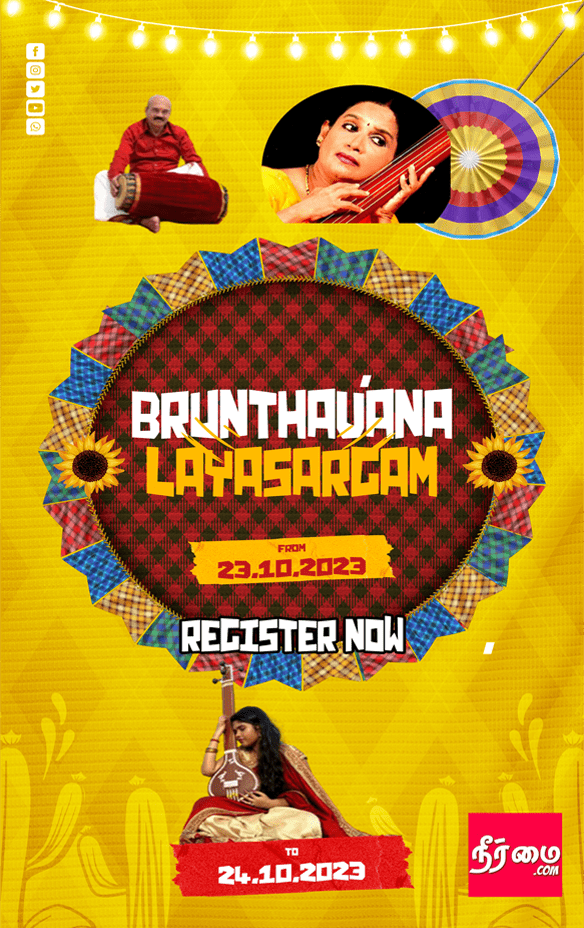Humanity has been gifted with diverse religions, each carrying profound wisdom and guidance. At their core, all religions teach love, peace, and righteousness, reminding us that we all come from the same Creator. There is no need for division, comparison, or conflict—our purpose is to live with kindness and respect, without harming or disturbing others. In this series, I will explore different religions, their true essence, and their deeper meanings from my perspective.
Today, we are going to talk about the following religion:
Islam: A Guide to Life, Not Just a Religion
Islam is not just a religion; it is a way of life, a divine guidance that teaches humanity how to live with justice, kindness, and wisdom. However, misunderstandings often arise—not about Islam itself, but about those who follow it. Many Muslims believe that other religions attack Islam, but in truth, what is often criticized are the actions of some followers, not the message of Islam itself. It is important to understand this distinction to foster peace and unity among people of all beliefs.
Misunderstandings About Islam and Muslims
People of other faiths do not hate Islam. In fact, many admire its depth, its discipline, and its emphasis on justice and compassion. The problem arises when some Muslims misunderstand or misrepresent their own faith. Acts of extremism, cultural influences, and personal interpretations sometimes overshadow the true essence of Islam. As a result, when non-Muslims question or critique certain practices, it is not Islam they are rejecting but rather the actions of those who fail to follow it properly.
Islam is like a clear river, but sometimes, people muddy its waters with their own misunderstandings and behaviors. If Muslims truly follow the teachings of the Prophet Muhammad (PBUH) with sincerity, they would be a shining example of justice, love, and mercy. This would make others respect Islam rather than question it.
The Concept of Multiple Wives in Islam
One of the most debated topics about Islam is the allowance of polygamy. Many people, including some Muslims, struggle to understand why Islam permits a man to marry more than one woman. Some non-Muslims see it as unfair, while some Muslims misuse it for personal desires rather than as a solution for societal problems. But let’s look at it from a deeper, more logical perspective.
In Islam, polygamy is not about satisfying a man’s desires; it is about responsibility, protection, and justice. The Quran clearly states:
“… then marry those that please you of women, two or three or four. But if you fear that you will not be just, then [marry only] one …” (Quran 4:3)
This verse emphasizes that justice is the foundation of polygamy. If a man cannot be just, he should only marry one. In contrast to secret affairs or cheating—which exist in many societies—Islam provides a lawful and ethical framework for polygamy. Instead of men having mistresses or engaging in relationships outside marriage, Islam teaches them to take responsibility for every woman they marry.
A Story of Wisdom and Justice
Imagine a man named Kareem who has been happily married to his wife, Aisha, for many years. They have a strong bond, built on love and respect. However, Aisha falls seriously ill and can no longer fulfill certain responsibilities in the household. Kareem takes care of her with all his heart, but he also realizes that he has other responsibilities—his children, his aging parents, and his work.
One day, Aisha tells Kareem, “I know you love me, but I also know you need support. If you find another woman who can help our family while respecting our marriage, I will accept her as a sister, not as a rival.”
Kareem is moved by Aisha’s wisdom and selflessness. He prays for guidance and, after much thought, marries another woman, Fatima. However, he does not neglect Aisha; instead, he continues to love and care for her while also ensuring that Fatima is treated with kindness and fairness. Over time, the two women develop a deep bond, supporting each other rather than competing.
This is the kind of justice and responsibility that Islam promotes. It is not about lust; it is about love, duty, and fairness. In contrast, many societies encourage affairs, cheating, and secret relationships, which lead to broken families and emotional pain. Islam, on the other hand, provides a solution that upholds the dignity of all involved.
A Message to Muslims
Many Muslims feel attacked when people criticize their faith. But before reacting emotionally, they should ask: Are they attacking Islam, or are they questioning how some Muslims practice it?
The best way to respond is not through anger but through action. Live in a way that reflects the beauty of Islam. Show kindness, be just, and seek knowledge. Instead of arguing with those who question Islam, demonstrate its greatness through your behavior.
As the Prophet Muhammad (PBUH) said:
“The best among you are those who have the best manners and character.” (Bukhari & Muslim)
Islam is not about rules and restrictions; it is about balance, wisdom, and justice. If Muslims understand this, they will find peace within themselves and earn respect from others.
True Faith: Beyond Names, Attire, and Culture in Islam
A man who believes that God is one and follows the core principles of justice, kindness, and righteousness is already walking the path of Islam, whether he realizes it or not. Islam is not about changing one’s name, attire, or identity—it is about the heart’s submission to the Creator, not a performance for society. True faith is not measured by outward symbols but by sincerity, humility, and the way one treats others. A believer does not need to abandon his birth community or culture to seek closeness to God, for God sees beyond labels and rituals—He looks at the purity of the soul. Islam is not about seeking approval from people; it is about fulfilling one’s duty to the Divine with honesty and devotion.
Unfortunately, many Muslims believe that true acceptance of Islam requires a person to change their dress code, name, and culture, but this is a misconception. Forcing such changes is no different from insisting that someone must stay within their caste or specific group, which contradicts the true spirit of Islam. Islam is a way of life that embraces all humanity, not a rigid identity that demands conformity. In the end, it is not how the world perceives you but how truly you submit to the oneness of God that defines your faith.
Understanding Historical Marriages: Context, Culture, and the Truth Behind Misconceptions
The topic of young girl marriages in history, particularly in the context of Prophet Muhammad (peace be upon him) and his wives, has been widely misunderstood and often misrepresented. To understand this matter deeply, one must look at historical, cultural, and social contexts rather than judging them by modern standards.
Marriage in Historical Context
Throughout history, marriage customs have varied across civilizations, depending on factors such as life expectancy, maturity, and social stability. In many ancient and medieval societies, including Europe, Africa, the Middle East, and Asia, marriages at younger ages were the norm. Life expectancy was significantly lower, with many people not living past their 40s or 50s, meaning earlier marriages were seen as necessary for family continuity and survival.
For example:
- Europe: In medieval Europe, marriage at the age of 12-14 was legally and socially accepted, especially among nobility. England, until the 19th century, legally permitted girls to marry at 12.
- United States: Even today, some states allow marriage under the age of 16 with parental consent. For instance, in Massachusetts, girls as young as 12 could marry with court approval until recent reforms.
- Asia: In China and India, historically, arranged marriages for young girls were common, with societal structures reinforcing these practices.
- Islamic World: The age of marriage was traditionally based on physical and emotional maturity rather than a fixed number, as seen in many cultures globally.
Prophet Muhammad’s Marriages: Context and Wisdom
Prophet Muhammad (peace be upon him) had multiple marriages, each serving a significant purpose, whether for social alliances, protection of widows, or strengthening the Muslim community. His marriages were not driven by personal desire but were strategic and humanitarian in nature.
Marriage to Aisha (RA)
One of the most debated aspects is the marriage of the Prophet to Aisha (RA). Islamic sources state that the marriage was consummated when she reached maturity. In Arabian society at the time, puberty marked the transition to adulthood, and marriages were arranged accordingly. Critics often fail to acknowledge that this was the norm across various cultures, including Christian and Jewish communities. Historical records show that young marriages were common in ancient societies, not just in Arabia but globally.
Marriages to Widows and Divorced Women
Unlike the stereotype that Islam permits unjust treatment of women, Prophet Muhammad’s marriages demonstrated a deep commitment to protecting and uplifting women. The majority of his wives were widows or divorced women:
Here is a list of Prophet Muhammad’s (PBUH) wives, their ages at marriage, and the purposes behind these marriages:
1. Khadijah bint Khuwaylid (Age: 40)
- Purpose: Love and companionship. She was his first wife, a successful businesswoman who supported him spiritually and financially.
2. Sawda bint Zam‘a (Age: ~50)
- Purpose: Protection and care. She was a widow, and the Prophet (PBUH) married her to provide support.
3. Aisha bint Abu Bakr (Age: ~6, consummated at 9)
- Purpose: Strengthening ties with Abu Bakr, his closest companion. Aisha later became one of the greatest scholars of Islam.
4. Hafsa bint Umar (Age: ~20)
- Purpose: Strengthening ties with Umar ibn Al-Khattab, another close companion. She was a widow, and the marriage ensured her protection.
5. Zaynab bint Khuzayma (Age: ~30)
- Purpose: Compassion. She was known as “Mother of the Poor” for her generosity and had lost her husband in battle.
6. Umm Salama (Age: ~29)
- Purpose: Protection. She was left with children after her husband died, and the Prophet (PBUH) married her to provide care.
7. Zaynab bint Jahsh (Age: ~38)
- Purpose: Breaking pre-Islamic traditions. She was initially married to the Prophet’s adopted son, Zayd. The marriage demonstrated that adopted sons are not the same as biological sons in Islamic law.
8. Juwayriya bint al-Harith (Age: ~20)
- Purpose: Political alliance. She was from a defeated tribe, and her marriage led to the release of many captives and brought peace.
9. Umm Habiba (Ramlah bint Abi Sufyan) (Age: ~35)
- Purpose: Strengthening relations with Abu Sufyan’s tribe, reducing hostilities between them.
10. Safiyya bint Huyayy (Age: ~17)
- Purpose: Political reconciliation. She was from a Jewish tribe, and the marriage helped integrate her people into the Muslim community.
11. Maymunah bint al-Harith (Age: ~36)
- Purpose: Strengthening alliances with various tribes.
Each marriage had social, political, or humanitarian reasons, showing that they were not based solely on desire but rather strategic and compassionate purposes.
Legal Marriage Ages in Different Countries
Even today, marriage laws vary widely. Some examples include:
- Argentina: The legal marriage age was 13 for girls until 2019.
- Niger, Chad, and Bangladesh: Early marriages are still common due to cultural traditions.
- Spain: The legal marriage age was 14 until 2015.
- United States: Various states still allow minors to marry under special circumstances.
Understanding the Purpose of Early Marriages
The key takeaway from historical marriages is that they were not comparable to modern child exploitation. In those times, marriage provided:
- Security and Protection: Young girls were often at risk in unstable societies, and marriage ensured their well-being.
- Social Stability: Alliances were formed to strengthen communities.
- Economic Survival: Families relied on marriages to ensure financial stability in difficult economic conditions.
Context Matters
When discussing historical figures like Prophet Muhammad (peace be upon him), it is essential to study the broader historical, cultural, and social contexts rather than applying modern biases. Marriages in those times were deeply embedded in societal norms, and they served moral, social, and humanitarian purposes. Islam emphasizes consent, care, and protection in marriage—principles that, if followed correctly, could prevent abuse and ensure ethical relationships in any era.
Conclusion: Islam Is a Guidance for All
Islam is not just a religion; it is a guide for humanity. It teaches how to live a life of honesty, justice, and compassion. The misunderstandings about Islam often come from those who do not truly follow its teachings. By living according to the true principles of Islam—kindness, patience, and fairness—Muslims can show the world the beauty of their faith.
So, the next time someone questions Islam, respond with wisdom, not anger. Show them through your actions what Islam truly stands for. Because Islam is not just a belief—it is a way of life.


































